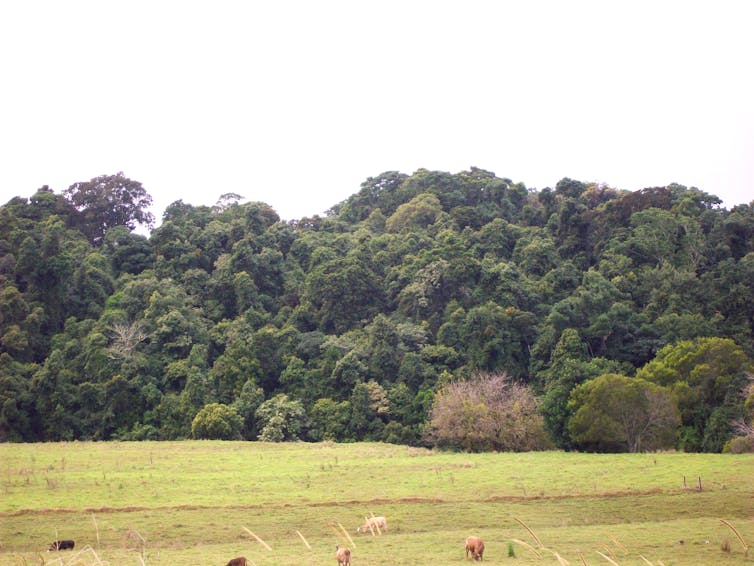The Australian parliament will conduct into the dangers of “forever chemicals”.
Authors
Bangle Wu
PhD candidate, Australian łÔąĎÍřŐľ University
Ehsan Nabavi
Senior Lecturer in Technology and Society, Responsible Innovation Lab, Australian łÔąĎÍřŐľ University
The move comes after a string of revelations about the potential dangers of the substances, including news this week that has detected the chemicals in the city’s drinking water sources. Independent senator Lidia Thorpe, who led the push for a parliamentary inquiry, described these chemicals as the “asbestos of the 21st century – far more prevalent and far less understood.”
Forever chemicals, technically known as per- and poly-fluoroalkyl substances (PFAS), have been linked to . This makes their widespread presence in our water particularly alarming.
But what types of chemicals are actually considered “forever chemicals”? And how should we deal with the escalating threat they pose?
An expansive group
The term “forever chemicals” refers to an expansive group of chemical compounds with an evolving definition. They are used in a range of everyday products, such as makeup, cookware and clothing, for their water, oil and stain-resistant properties.
In , American chemist Robert Buck and his colleagues defined more than 200 substances in the PFAS group.
In , a group led by the Organisation for Economic Cooperation and Development (OECD) updated the definition, adding roughly 5,000 chemical substances.
In 2021, scientists published a yet another , which broadened the PFAS universe to include .
However, the phrase “forever chemicals” is often used to refer to different group of substances in different contexts.
In January 2023, a proposal to from five European countries included more than 10,000 chemicals.
However, mainly covers three well-known types of “forever chemicals”.
Therefore, using “forever chemicals” – or PFAS – omits many complexities.
Current analytical methods can only detect around – a tiny proportion of the whole PFAS universe.
and are the most well-known.
There are devils we know – and devils we don’t know.
Local contamination versus background contamination
To understand the risks of PFAS in drinking water, it’s important to differentiate between background contamination and local contamination.
Local contamination includes legacy contamination from aqueous firefighting foam and industrial manufacturing pollution. It is often mainly confined to local areas and often has higher concentrations of contaminants.
Background contamination is related to exposure to everyday products containing PFAS, such as cookware, carpets, masks and makeup. The general public’s exposure to background PFAS contamination differs from the risks of heavily contaminated communities.
For example, during 2018-2019 was 27 nanograms per millilitre. This is because of the presence of PFOS in firefighting foam.
These are relatively high figures compared to the concentration of PFOA in Sydney’s water: .
PFAS chemicals are so they can show up in drinking water even without a clear source of contamination, such as an industrial spill or the use of firefighting foam. Unlike localised pollution, they spread widely, complicating our fight against them.
Risks related to environmental health are always controversial and tricky to address.
As for PFAS, on the one hand, the International Agency for Research on Cancer has PFOA as carcinogenic and PFOS as possibly carcinogenic.
On the other hand, the long-term health impacts of background exposures remain .
Many other substances in the PFAS universe are still not fully understood.
A looming threat
The ubiquitous existence of forever chemicals as background contamination may not immediately kill us. But it’s a looming threat to our future.
As their name suggests, these substances are notorious for their inability to break down and degrade. This means they can accumulate in our bodies and in the environment, and don’t disappear.
This was spotlighted this week by a study which discovered of deceased platypus throughout eastern New South Wales.
The warning of Rachel Carson, the late American marine biologist and writer, in still remains powerful 60 years later: the chemicals we use in attempts to control nature are pushing its fragile limits beyond what it can handle.
Beyond “forever chemicals”
From July 2025, the federal government the use, manufacture, import and export of some of the most prominent PFAS chemicals.
This is a good step towards tackling the PFAS issue and could lead to more investigations and potential government action. The challenge of these forever chemicals already being in our environment, including in our drinking water, still remains.
And even if we all started simply buying bottled water, we still risk being exposed to PFAS.
For one, . Secondly, even if we avoided PFAS in our drinking water, we’re still exposed to it through popular everyday items such as non-stick pans and waterproof jackets.
We need to expand our focus from just the presence of PFAS in our drinking water to how these chemicals have woven themselves into our daily lives.
With countless products designed to resist water and stains, it’s time to ask: do we truly need these chemicals to stay dry, keep our cosmetics water-resistant or make our cookware non-stick?
It’s time to think more responsibly about the choices we make that affect us in small and big ways – and . There are alternatives to these dangerous chemicals – alternatives that are technically feasible and offer a pathway to a more sustainable society.
![]()
The authors do not work for, consult, own shares in or receive funding from any company or organisation that would benefit from this article, and have disclosed no relevant affiliations beyond their academic appointment.








